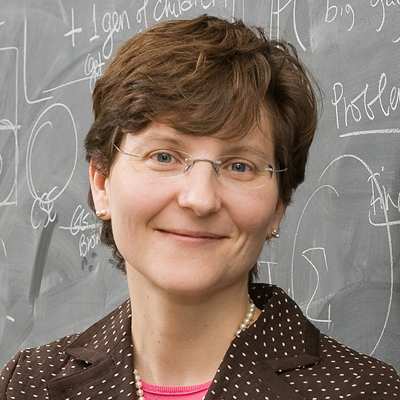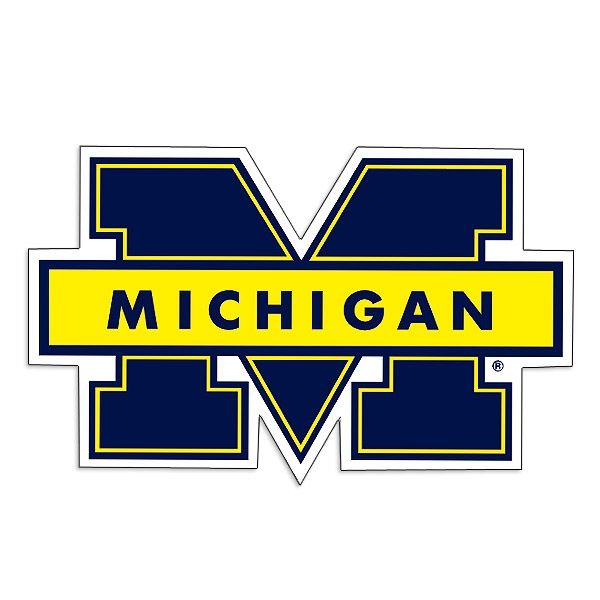Bridging engineering and science questions with mathematics
When you think of mathematical analyses and algorithms, the first image that comes to mind is probably a chalkboard with numbers, squiggles, and letters. However, some of the most applicable science for future technologies, health-related breakthroughs, and engineering endeavors is a product of sophisticated mathematics. Dr. Anna Gilbert, Herman H. Goldstine Collegiate Professor of Mathematics at the University of Michigan is a testament to such science. Her research starts with a scientific or engineering problem on which she and a scientist or engineer work closely, until together, they can formulate an approachable, succinct mathematical problem that captures the essence of the fundamental science problem. Then, Dr. Gilbert goes to work on the math problem, alongside her team, to find a solution that can be implemented in real settings. Thus, her research plays an important role in bridging engineering and science questions with mathematics to establish new areas of applied math that have an impact on scientific and technological applications.
Dr. Gilbert is the rare mathematician who builds devices, writes software, instruments bridges, and proves theorems. Her holistic approach to mathematics allows her and her team to approach problems that many times are left unanswered by mathematicians. Apart from the important implications of her research, much of her work is also basic in nature. Therefore, although it may not have an immediate impact on society, it does reveal new challenging problems that help build knowledge for future questions. Dr. Gilbert believes that “a society which fosters creativity and curiosity, even if those endeavors are not directly ‘applicable,’ is a richer one.” Therefore, with her motivation to make sense of the world, and with the help of her diverse team, improve it, her basic and applied research is expanding new horizons for mathematics.
Current research includes:
-
Reconstructing the Inside of the Body: Remember as a kid, shining a flashlight through your hand in the dark and just barely making out the dark spots that are your bones inside your fingers? Dr. Gilbert uses the same idea to perform optical tomography, an imaging modality in which one shines a light at an object, typically filled with turbid liquid, and from shadows cast by the light on the boundary of the object, one is able to reconstruct what is inside the body. Working alongside collaborators, Dr. Gilbert is trying to identify what the essential mathematical stumbling blocks that make imaging problems in continuous bodies challenging. From these measurements, she and her team are trying to reconstruct the absorption values of the internal vertices. This is therefore called an inverse problem because one inverts measurements to obtain an image inside an object.
-
Structural Health Monitoring and Sketched SVDs: Dr. Gilbert and collaborators have developed an efficient measurement method and algorithm for recovering the fundamental vibrational modes of a structure. Currently, she and her team are working on other algorithms and models for this type of data. In so doing, collaborators from Civil Engineering have been able to test these measurement methods in their hardware devices.
-
Fourier Sampling, Off the Grid: By improving fourier sampling off the grid, Dr. Gilbert and her team hope to get the algorithm implemented in a good way by applying it to a variety of engineering problems, starting with the fundamental problem of analog-to-digital conversion. Dr. Gilbert believes that improvements can be made for super-resolution thus leading to better tools in health applications.
-
Sparse Approximation & Sparse Signal Recovery: Dr. Gilbert and her collaborators pioneered much of the analysis of sparse approximation algorithms, those algorithms that underlie much of modern signal compression. List sparse approximation is the idea that instead of insisting on a unique representation or compressed signal, a good list of sparse approximations could be sought out. Dr. Gilbert is working on creating a list sparse approximation and related algorithms. She and her team have some theory results and are therefore, continuing in an effort to develop good algorithms.
-
Deep Learning: There are many aspects of deep learning algorithms that are very similar to both algorithms for sparse signal recovery and for sparse approximation. Dr. Gilbert and her collaborators are trying to develop a solid mathematical theory of convolutional neural nets, in particular, in machine learning to understand how to improve deep learning algorithms and their performance on typical data sets.
Bio
Dr. Anna Gilbert’s father was a mathematician; as she grew up, his example illuminated the possibility of pursuing a career in academia for her. Often, he would bring colleagues, friends, and collaborators home and Dr. Gilbert would have the chance to listen to their discussions. Therefore, as she began her own journey in academics, Dr. Gilbert declared mathematics and physics as she had equal curiosity about both domains as well as aptitude. She remembers with fondness, a particular discussion in one of her physics courses where her excitement for mathematics came to the forefront. In fact, she recalls, as she sat beside graduate students, “I was more excited then they were!”
When she entered graduate school, she wasn't sure if she wanted to get a Ph.D. in "pure" or "applied" mathematics. As it turns out, it really didn't matter what the label attached to her degree was -- she worked on a combination of abstract mathematical concepts, computation, and a model for the diffusion of a physical quantity, such as heat, in an irregular object. While reflecting on her time as a graduate student, Dr. Gilbert is grateful for the many professors and mentors that ushered her through a challenging and rigorous course study. Her advisor was especially important as she showed Dr. Gilbert that a career in the sciences for women was a possibility.
Much of her work is done collaboratively with scientists or engineers, primarily because she is interested in understanding (and sometimes solving!) scientific or technological problems but doing so from the perspective of a mathematician. Her overriding motivation is to do good science and mathematics, combining mathematical tools and analysis to solve an interesting and challenging math problem and have an impact on science simultaneously. She is not interested solely in applying mathematical tools to scientific problems but in advancing mathematical ideas and innovations too.
Some of her work in algorithms (or theoretical computer science) and the interactions with mathematics and engineering has come about because she is interested in questions like, "Why is this algorithm or computational recipe so successful in practice? What makes it work? On what kind of data or input? Can we use that understanding to improve the algorithm --- to solve harder/different problems? What can't we solve with this algorithmic approach?"
Aside from research, in her free time, Dr. Gilbert enjoys spending time with her two children and her husband, who is also a mathematician and computer scientist. Additionally, she likes being outside and staying active. For fun, she competes in triathlons although she is quick to share that it is “only a hobby.”


